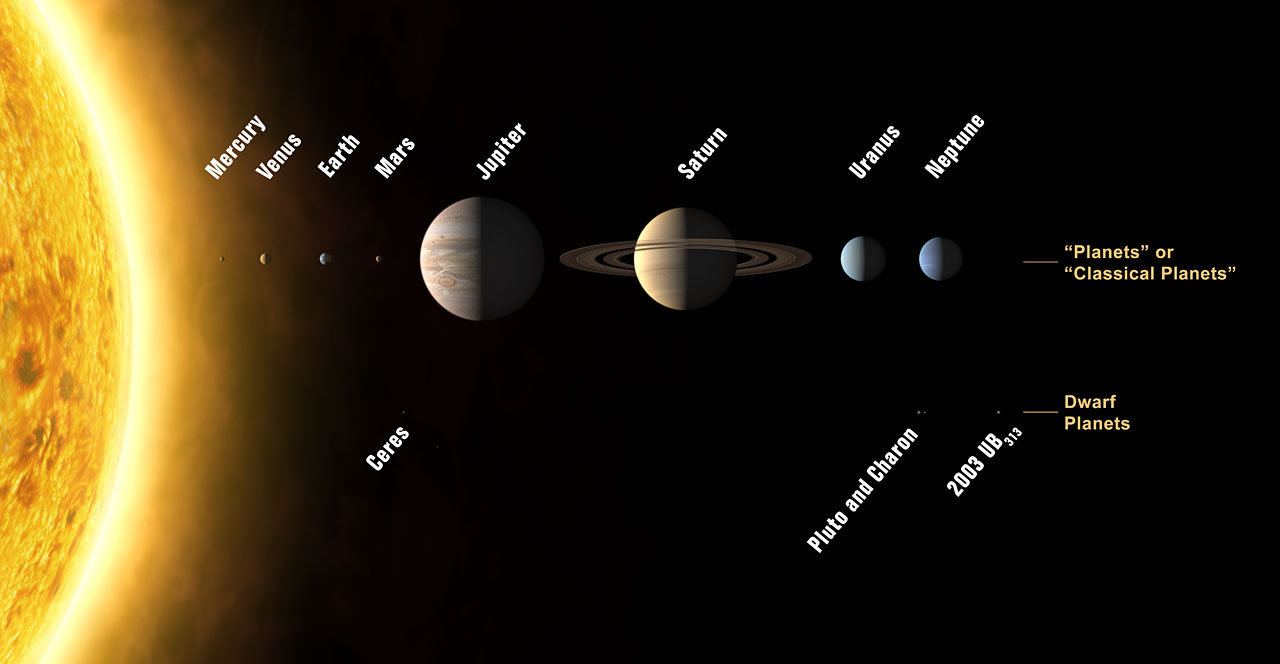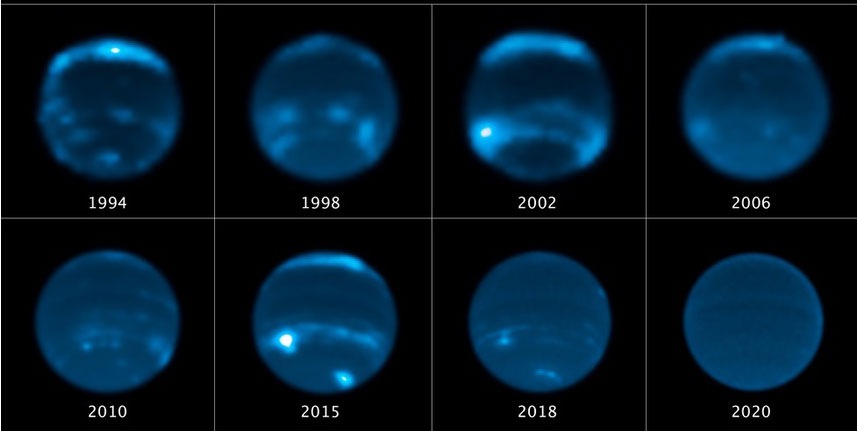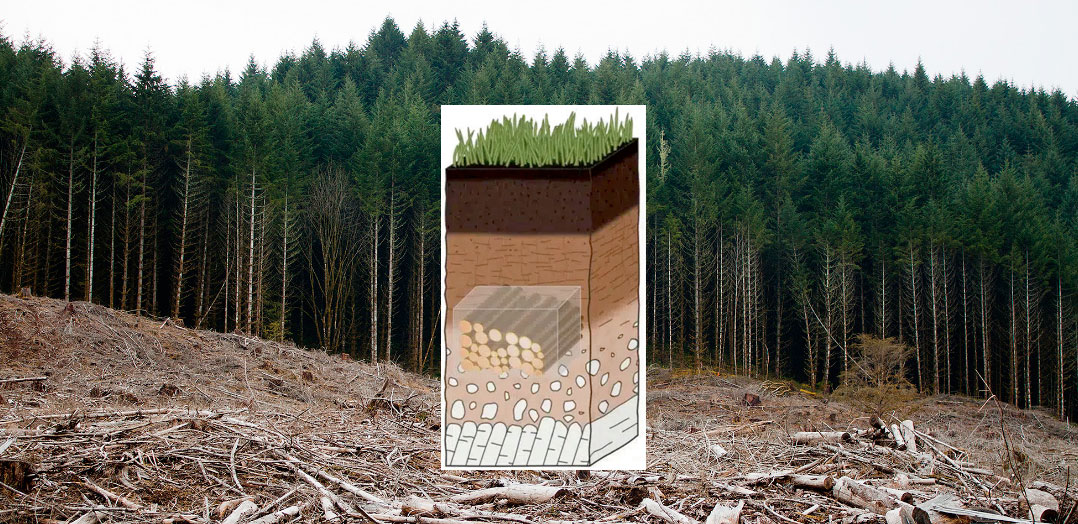 PLANETS and dwarf planets in the solar system. The sizes of the planets are to scale, but not their relative distances from the Sun. Illustration: NASA.
PLANETS and dwarf planets in the solar system. The sizes of the planets are to scale, but not their relative distances from the Sun. Illustration: NASA.
The Entire Solar System is Changing
The Sun has changed its activity dramatically during recent years. This is particularly evident on the outer planets of the solar system, and Free West Media presents a unique compilation of the drastic changes that some planets are currently undergoing and that are likely awaiting Earth as well.
Published: September 7, 2023, 12:45 pm
The activity of the Sun has drastically decreased, causing concern among solar scientists. The previous solar cycle, Cycle 24, from December 2008 to December 2019, was the weakest in a century. The Sun is currently in the active phase of weak Cycle 25, so we can expect more precipitation and colder temperatures in the coming less active years.
A small number of sunspots indicate that the Sun’s magnetic activity is low, as is the number of charged particles it emits, known as the solar wind. The solar wind primarily consists of electrons and protons and reaches much farther than Earth, affecting all the planets in our solar system.
Therefore, the solar wind fills the space within the solar system and is a major component of the “interplanetary medium.” The region dominated by the solar wind is called the heliosphere and typically extends well beyond Pluto’s orbit. As the solar wind decreases, the heliosphere contracts. This means that the planets farthest from the Sun are affected first and most, although the effects may differ from those on Earth due to different conditions on each planet.
The Sun’s influence is amplified by the fact that many planets lack a protective atmosphere like Earth’s, so they experience significant changes in their magnetic fields, pole shifts, planetary materials, atmospheres, and climates. Planets with weather patterns, such as clouds and storms, are undergoing dramatic changes that can be observed and measured from Earth and the space probes humanity has sent out. This is also something that the establishment is quietly showing great interest in, while the general public remains largely uninformed.
This, more than anything else, proves that escalating extreme weather and climate changes are not caused by cars, air travel, or our lifestyles. Even the most ardent climate alarmist cannot believe or argue that humans or animals are responsible for the changes we are witnessing on Pluto or the planets in our solar system. The Sun exposes their bluff, which is why they desperately try to ignore it – something no genuine climate scientist would ever dream of doing.
The Sun, the planets, and the solar system are undergoing significant changes, and the public remains unaware
Just as Earth is witnessing the beginning of dramatic climate changes due to the Sun’s decreased activity, the entire solar system and the magnetic fields of all the planets are being affected. Significant and, in many cases, unexpected changes have begun to occur on the planets in our solar system in recent years. New Times has compiled a summary of all the planets for our readers (from the Sun outward):
Mercury has no known changes yet, but it is small and closest to the Sun, offering the best “protection” against cosmic radiation. It is logical that it will be affected last.
Venus has altered wind speeds, 33 percent faster than before(!), and its rotation has slowed down. Note that Venus rotates in the opposite direction to all other planets.
Earth has a weakened magnetic field, with the poles moving closer together and an accelerating change in rotation speed. The result is altered jet streams in the atmosphere, increased cloud cover, more water in the atmosphere, increased precipitation (snow, hail, and rain), larger hail, reduced solar radiation, cooler climate, more extreme temperatures and air pressure, extreme weather, altered ocean currents, stronger and more colorful auroras (as cosmic particles penetrate deeper into the atmosphere), and a rapidly thinning ozone layer (mainly in the southern hemisphere), more active volcanoes (50 are erupting), and likely more and larger earthquakes soon.
Mars is experiencing climate changes much more dramatic than those observed on Earth so far. The Red Planet has altered wind patterns, unexpected seismic activity with a now-active mantle(!), and has also started to rotate faster.
Jupiter has changed its magnetic field, leading to visibly altered weather patterns and radio waves. The well-known Red Spot, a high-pressure region in Jupiter’s atmosphere, has begun to fade. At the same time, a new one has appeared, named “Red Spot Jr.”
Saturn has changed storms, with a cyclical superstorm occurring ten years ahead of schedule.
Uranus has record-breaking storms and auroras (northern lights).
Neptune has seen a strong storm move in the opposite direction to usual, altered auroras (northern lights), and a 90-degree shift/tip of the planet’s poles! The first and last of these changes may indicate an ongoing pole shift. The clouds have also disappeared since the weak Cycle 25 began in 2019. NASA has come up with a reason this year: It’s the Sun… while simultaneously claiming that the Sun cannot affect cloud cover on Earth.

THE SUN CONTROLS CLOUD FORMATION, says NASA… on Neptune. This was revealed in a report released on August 17 and presented on the space agency’s website under the title “Neptune’s Vanishing Clouds Linked to the Solar Cycle.” Images taken by the Hubble Space Telescope show changes in the planet’s cloud cover since 1994, but it wasn’t until now that the “experts” realized it was due to the Sun. Screenshot: NASA.
Pluto has experienced a collapse of its atmosphere!
It’s worth noting that these changes appear to be occurring from the outside in within our solar system. This is explained by the fact that weakened solar activity first becomes noticeable at the outer reaches of the solar system, where the Sun’s influence is already weakest. Eventually, it becomes too weak to sustain the previously normal magnetic fields and the protection they provide against cosmic radiation from the galaxy. This is when we can observe changes in the planets’ weather and magnetic fields, something we can already see on Earth.
Even the galaxy itself has an overarching and cyclical magnetic field that affects the Sun, which has begun to exhibit significant changes in its magnetic field and chemical processes in the corona (the Sun’s “atmosphere”). We also see changes in the solar system itself due to this, including an increased accumulation of space dust, especially near the Sun. This last point is very alarming and something New Times will report on in the future.
In conclusion, it is clear that these dramatic changes in our solar system are hardly caused by human-produced carbon dioxide emissions or cow flatulence but rather by the common denominator of all the planets: the Sun. This is why these sensational changes on the planets in our solar system, which have surprised and shocked scientists and could become very interesting space and science news, are not shared with the public.
New Times’ research sources claim that NASA still has it partially wrong, as they have seen images this year that do not align with NASA’s new report. We will share several of their very interesting observations and revelations with our readers in the future.
All rights reserved. You have permission to quote freely from the articles provided that the source (www.freewestmedia.com) is given. Photos may not be used without our consent.
Consider donating to support our work
Help us to produce more articles like this. FreeWestMedia is depending on donations from our readers to keep going. With your help, we expose the mainstream fake news agenda.
Keep your language polite. Readers from many different countries visit and contribute to Free West Media and we must therefore obey the rules in, for example, Germany. Illegal content will be deleted.
If you have been approved to post comments without preview from FWM, you are responsible for violations of any law. This means that FWM may be forced to cooperate with authorities in a possible crime investigation.
If your comments are subject to preview by FWM, please be patient. We continually review comments but depending on the time of day it can take up to several hours before your comment is reviewed.
We reserve the right to delete comments that are offensive, contain slander or foul language, or are irrelevant to the discussion.

Bill Gates’ New Plan: Cut Down 70 Million Acres of Trees to “Combat Global Warming”
To be buried to prevent carbon emissions.It sounds like a bad joke, but the project has already been launched in US national parks. Millions of trees are to be felled "for the sake of the climate." The project is called the Carbon Lockdown Project and involves logging robots cutting down trees and dragging them to large pits where they are buried under oxygen-free conditions. "One ton of biomass in the soil is one ton of carbon dioxide not in the atmosphere," says Ning Zeng, the founder of the project. Bill Gates sponsors such a "climate company" called Kodama Systems, which has set itself the goal of burying one billion tons of biomass.

Solar researchers sound the alarm to deaf ears: “Severe cold and food shortages as early as the 2030s”
THE SUN IS CHANGING.Valentina Zharkova, a solar researcher and professor of mathematics and physics, already warned in 2019 about the Grand Solar Minimum, which she believes will affect the Earth between the years 2020 and 2053. According to her, researchers have observed clear signs of this since at least 2015.

